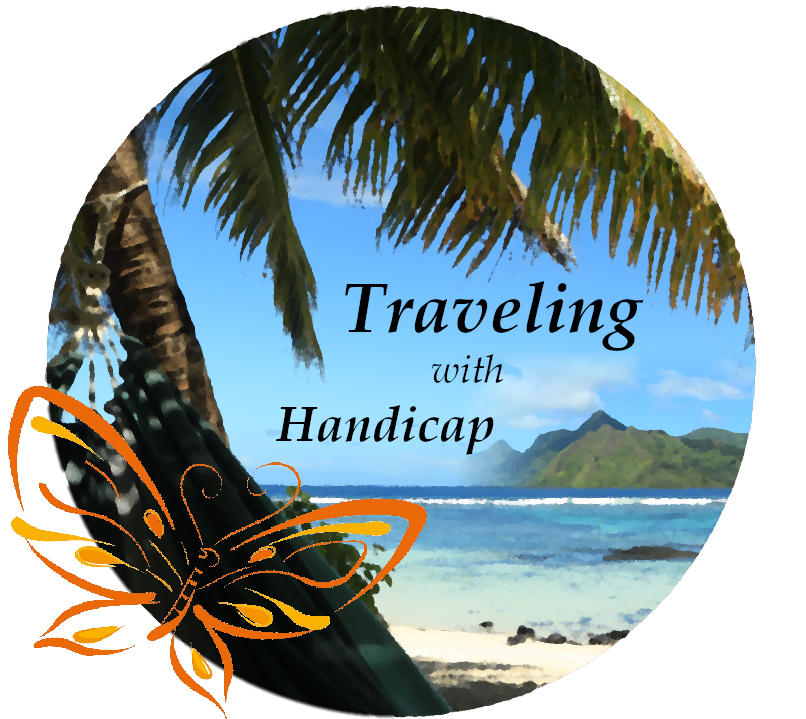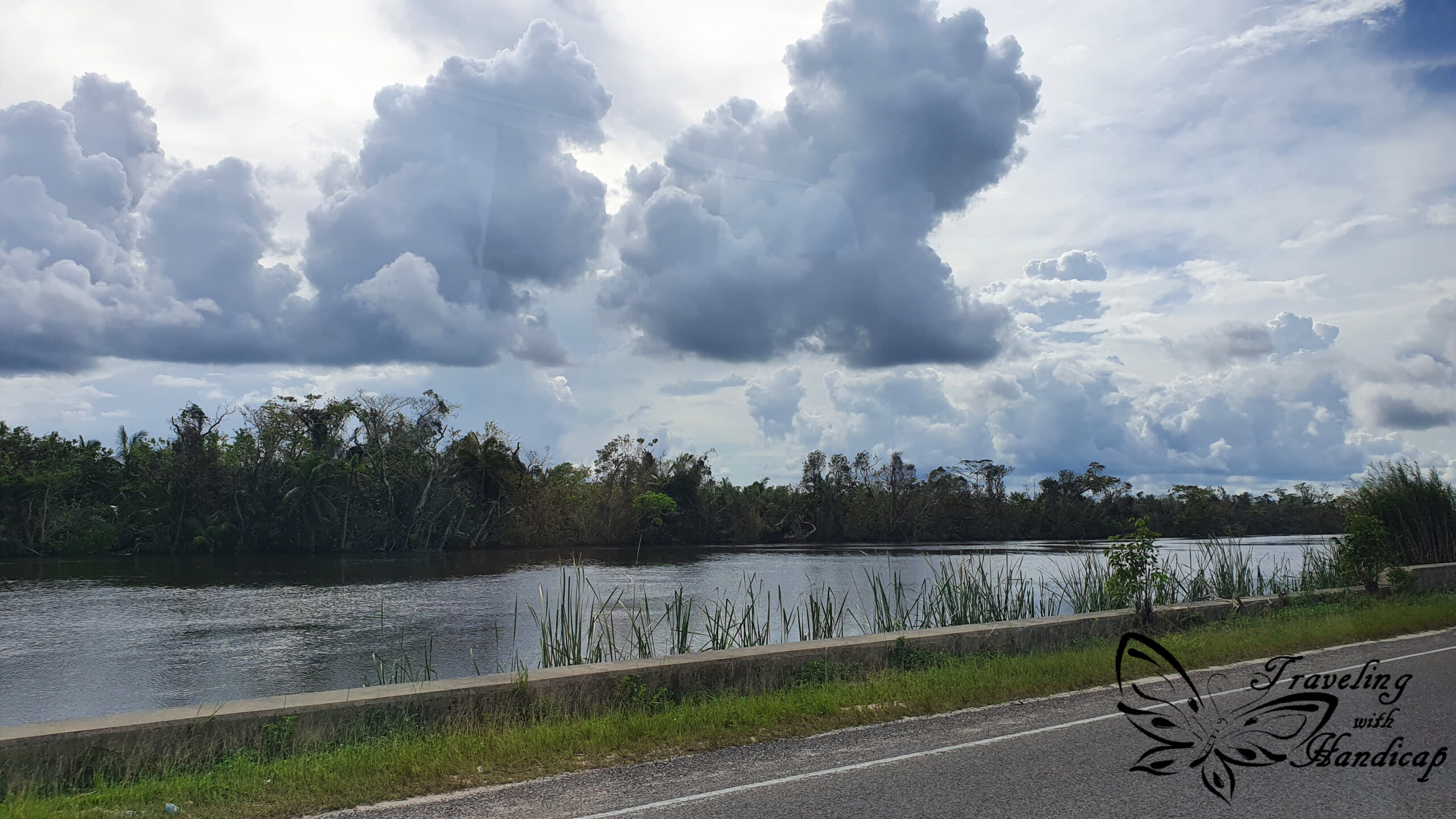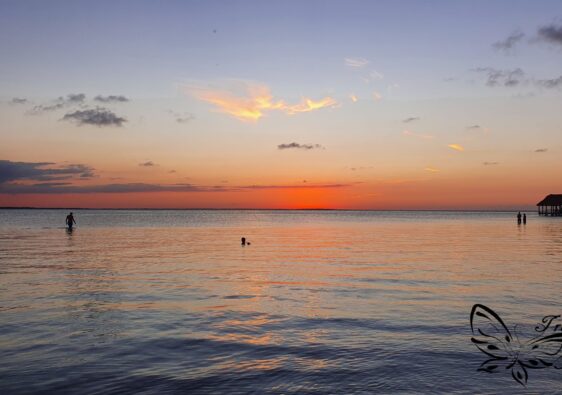A ship in harbor is safe, but that is not what ships are built for.
John A. Shedd
How to: getting around in Uruguay
Uruguay has a very good bus network across the country. From the bus terminal in Montevideo, you can reach nearly all other places across the country. Depending on their distance to Montevideo, there are more or less frequent connections. If you consider visiting Punta del Este, you can easily do it as a day-trip from Montevideo (or Montevideo as a day-trip from Punta) since there are buses approximately every 30 minutes.
While watching out of the window from the bus, I experienced Uruguay as a very green country. Thus, not many (bigger) cities or towns and large stretches of green, fields, plants, trees, in between. On the road from Montevideo to Punta del Este I also had very good views along large stretches of beach occasionally. Sure, Punta del Este is famous for its beaches, there are some smaller villages with beautiful beaches as well. Not all of them are accessible by bus and on a normal road, though. Some require 4×4 or a longer walk.

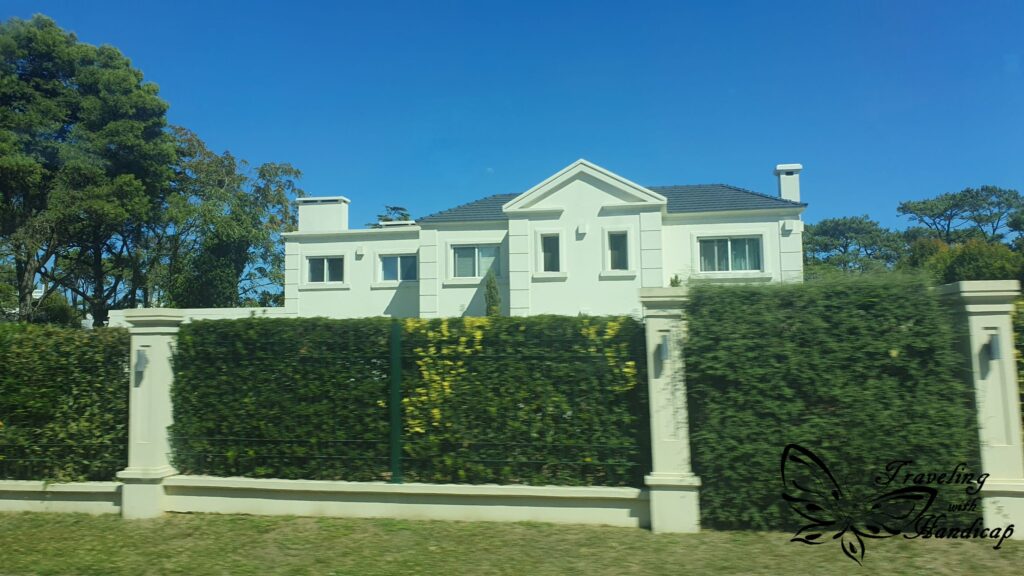
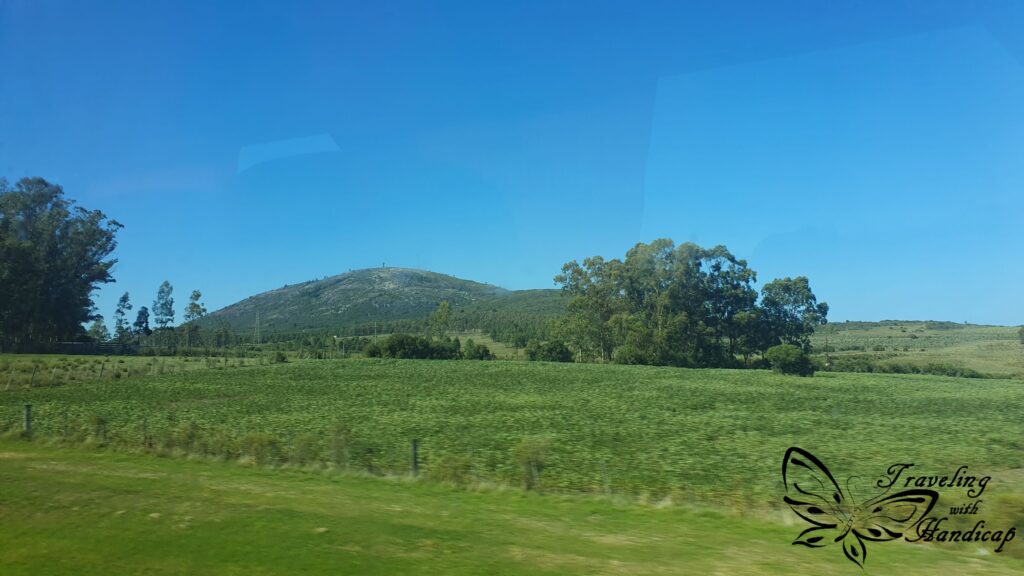

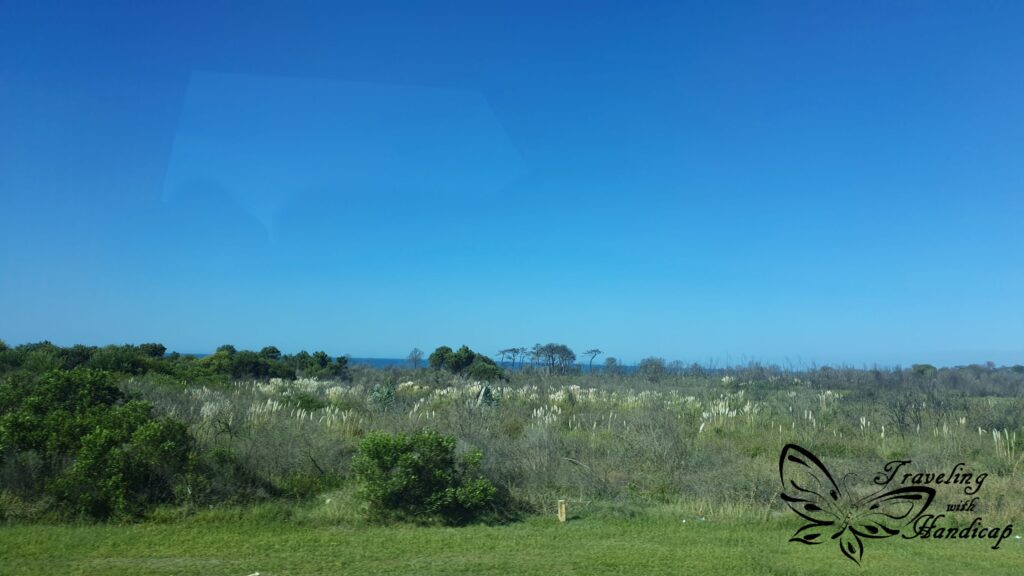
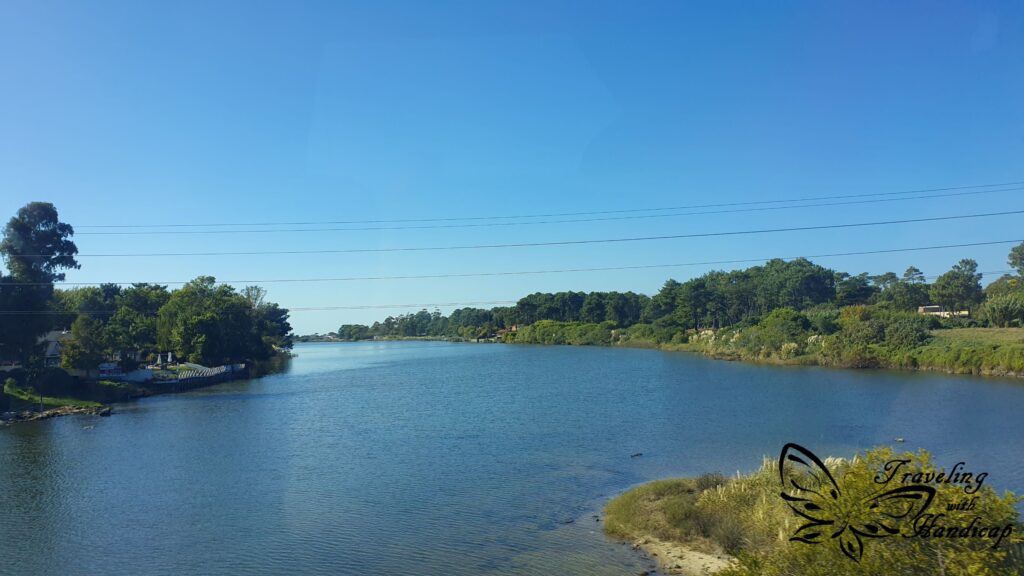
Punta del Este
At first, I try to mention the touristy spots which – in my opinion – are worth to be checked out:
- The Fingers of Punta del Este: very famous hand on the beach, you can’t really get a pic without other people
- Muelle de Maihos: a great place for swimming as the water is rather calm, and you can get into the water through a ladder instead of walking on the stones
- El Faro Punta del Este: a little walk away from the bus terminal and center, still nice to walk there along the beach
- Our Lady of the Candelaria church: next to the lighthouse (faro), bright blue cute church
- Punta de la Salina & Uruguay Flag: southernmost point of Uruguay, where the waters from the Rio de la Plata and the Atlantic Ocean finally meet
- Puerto del Punta del Este: great walkway with good restaurants between the Muelle de Maihos and the Puerto (harbor), recommended for nice views and good food
Punta del Este characterizes itself by many skyscrapers, for living, as hotels or for business. It is a famous holiday destination within Uruguay, so you’ll find plenty of (pricey) hotels. Honestly, I didn’t like the high houses very much, even though they were quite new and looked maintained. I preferred the smaller buildings in the quarter around the lighthouse, which reminded me of Greek white buildings. Moreover, I rather enjoyed the view along the coast instead of the buildings. 😉
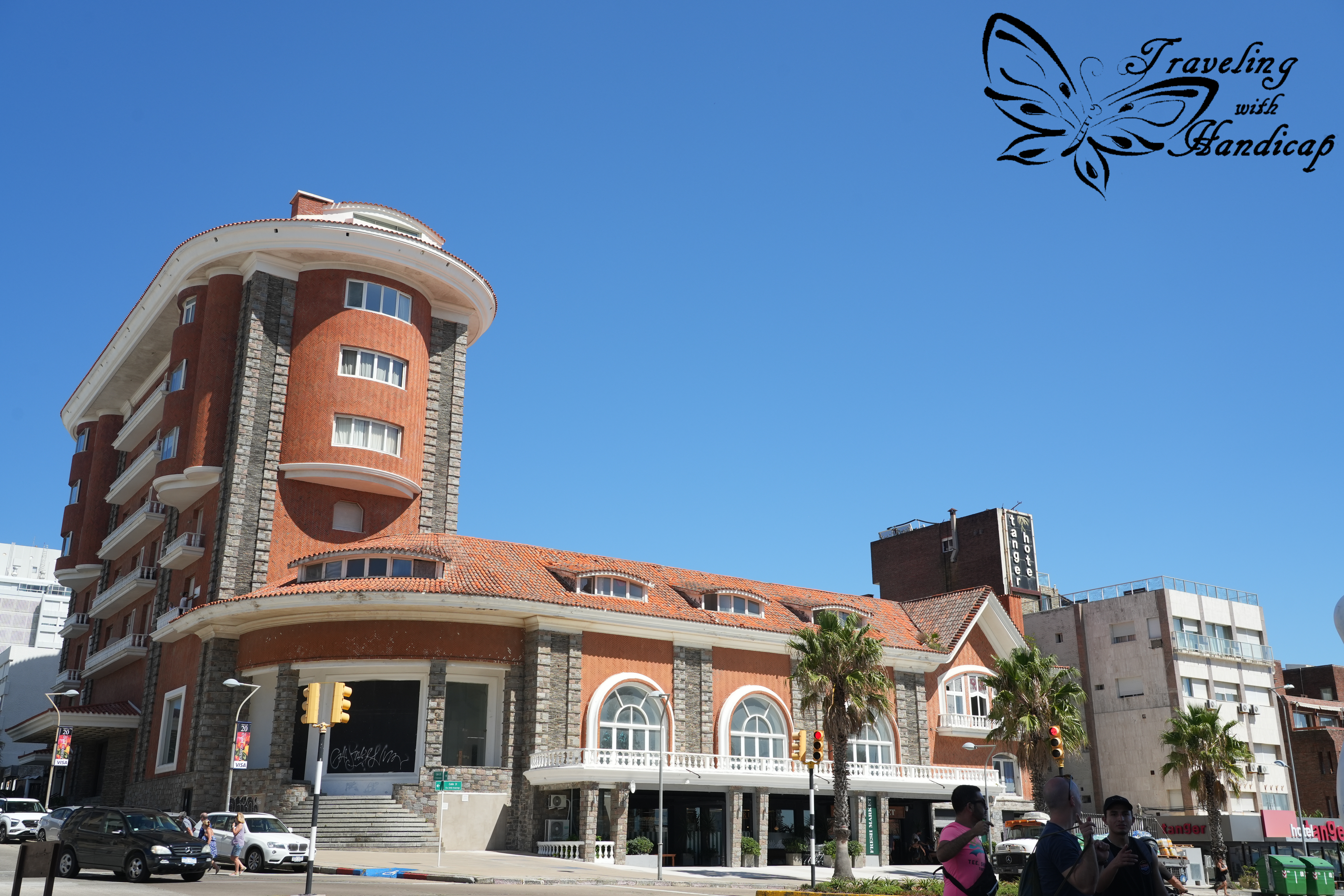
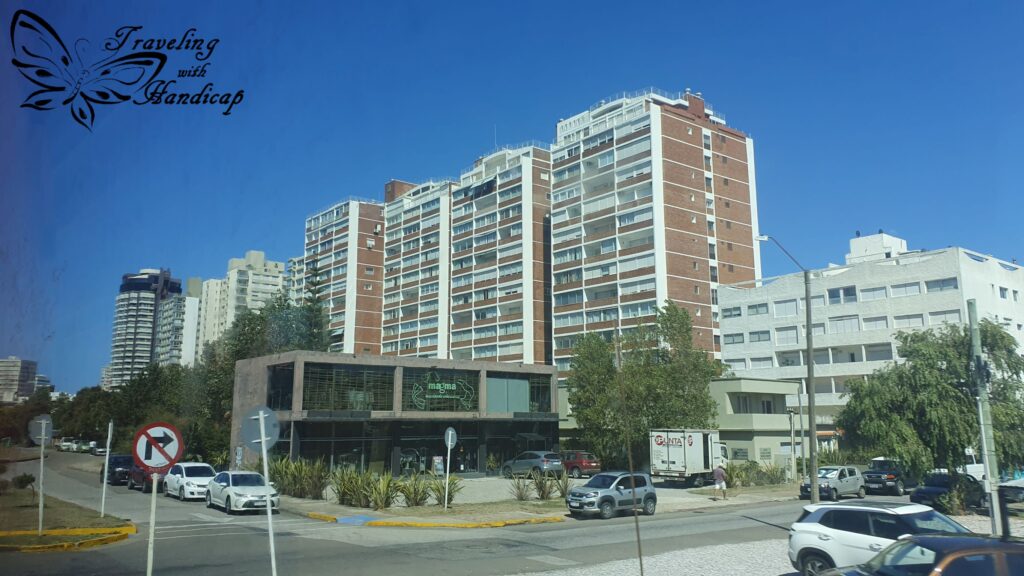
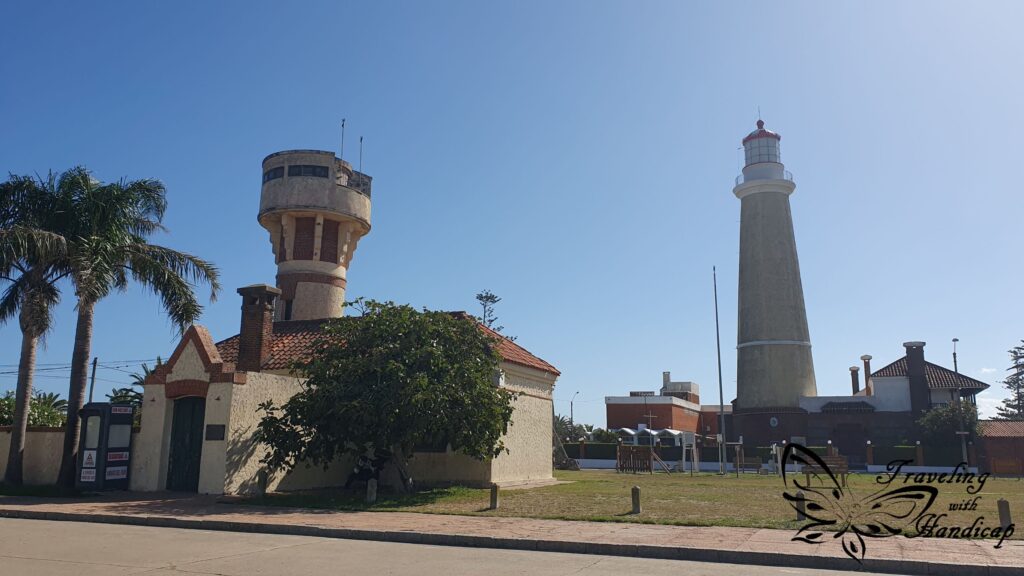

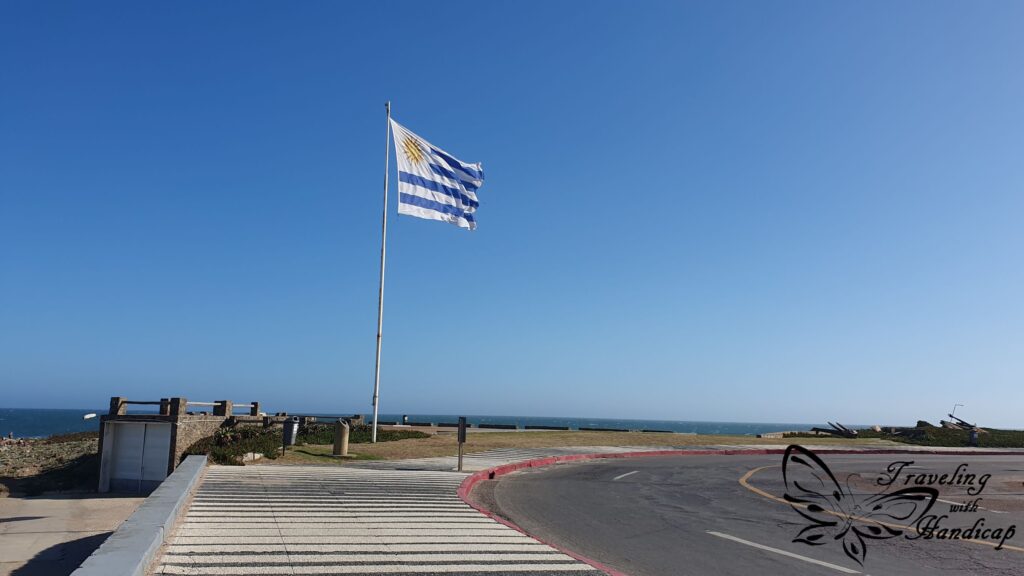
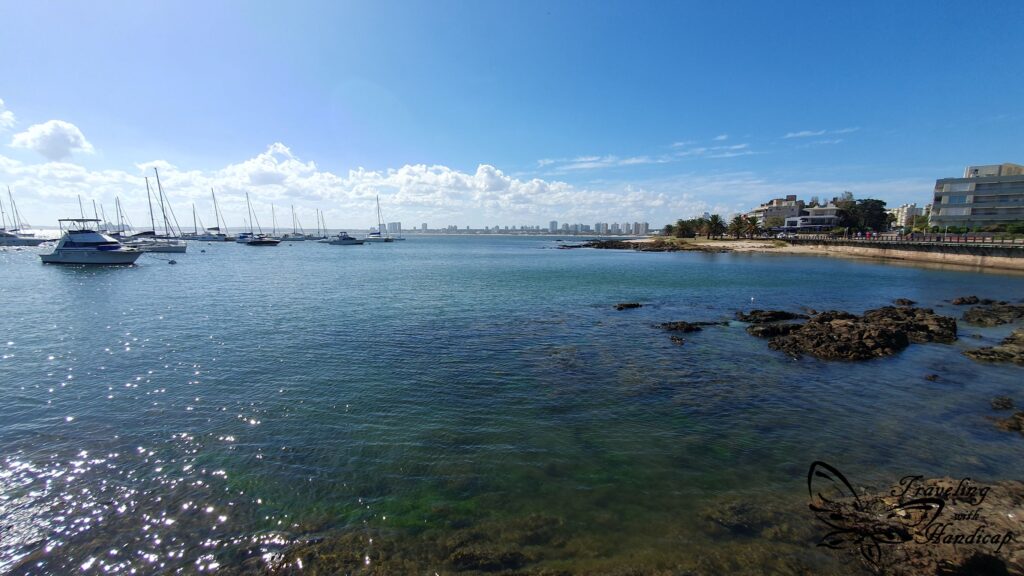
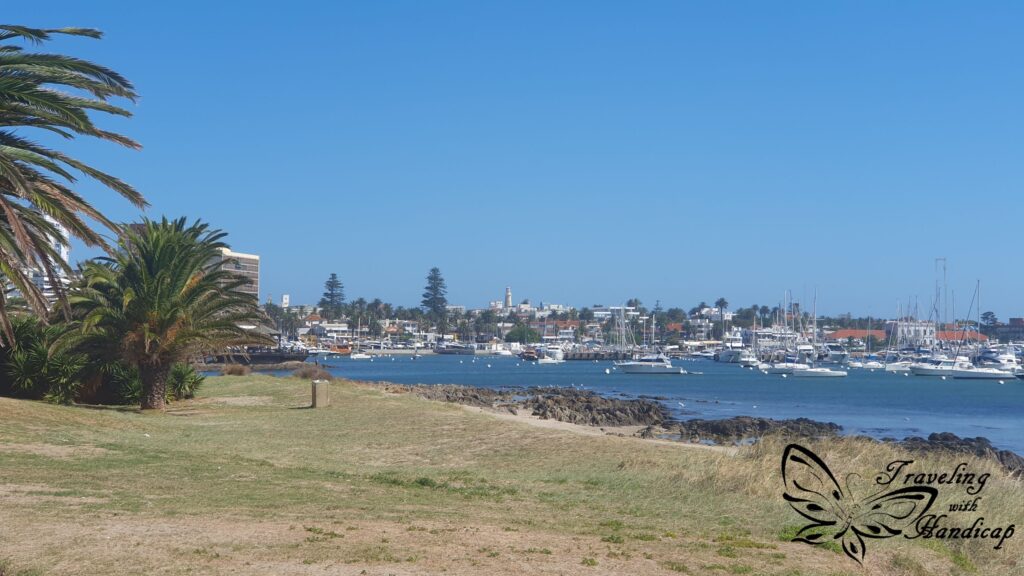
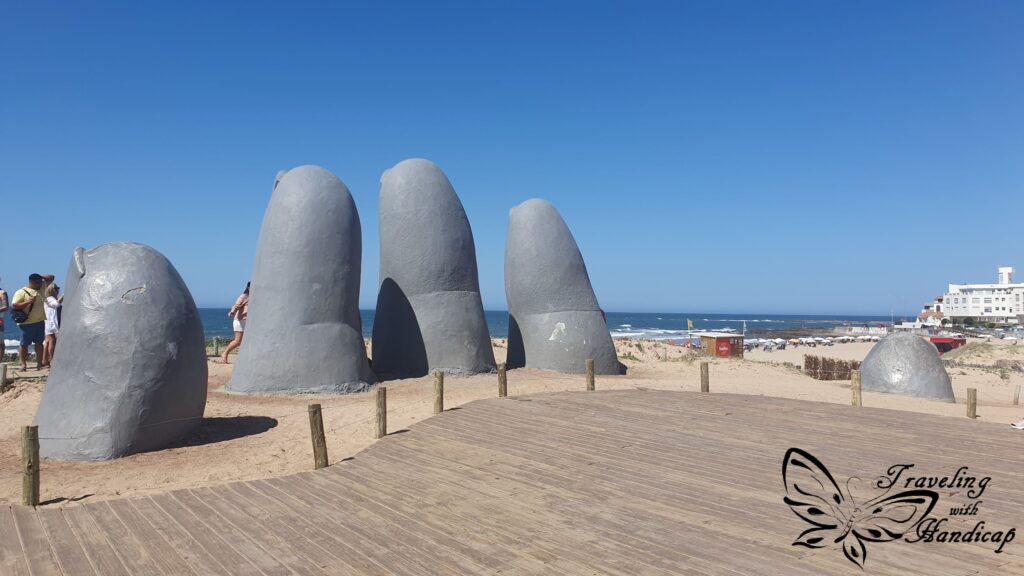
Shopping
There are buses within Punta del Este connecting it also to Maldonado. Some buses to Maldonado even say “shopping”, so I assume somewhere on the way to Maldonado are good options for shopping. There is a main road with some shops for daily needs and souvenirs, connecting the peninsula to the bus terminal. However, the souvenirs were pricey and as such not worth buying any and then carrying that stuff around.
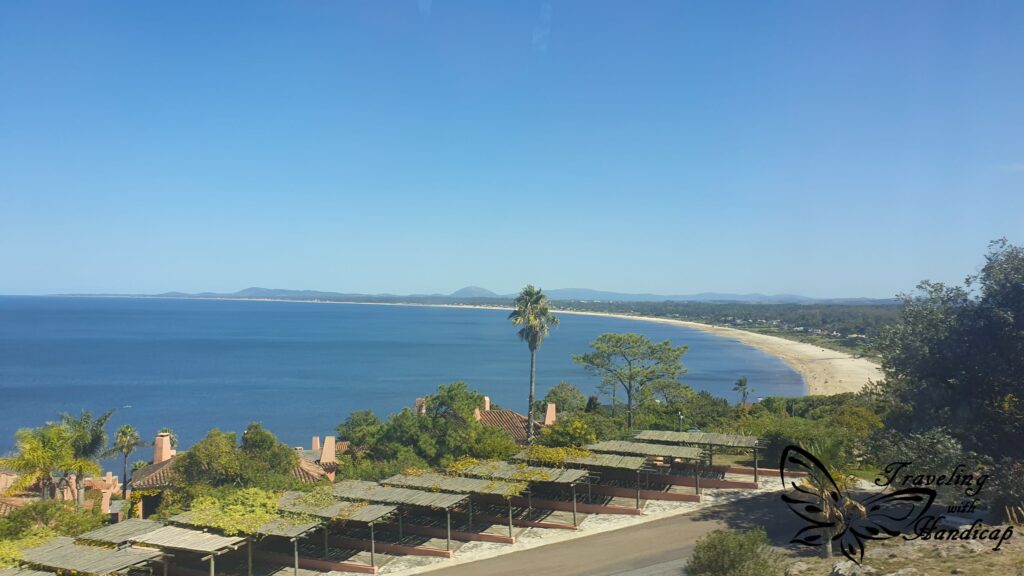
Colonia del Sacramento
Colonia del Sacramento is often shortened by only “Colonia”. There are fewer buses connecting Montevideo to Colonia than to Punta del Este. Therefore, I booked my bus-ticket 2 days ahead, just to be sure. Theoretically, you could visit Colonia from Montevideo as a day-trip. However, the bus ticket is more expensive than to Punta and moreover, Colonia is the perfect place to come from or continue to Buenos Aires by ferry.
Colonia is famous for its old city, which is rather small. It’s easy to walk around within one day. However, the pavement is rather rocky and uneven, you have to take care while walking. I experienced heavy rain for an hour (while I had lunch), afterward it was indeed quite slippery. This is why I don’t consider Colonia as a very accessible place. Nevertheless, if you check Colonia out, all streets of the Ciudad Vieja are worth to be walked along. I especially liked the colorful houses which, in their style, reminded me a lot of Antigua, Guatemala.
Ciudad Vieja
- Plaza 25 de Agosto
- Gral. Flores (street)
- Plaza Mayor
- Basilica of the Blessed Sacrament
- San Miguel Bastion
- Colonia del Sacramento Lighthouse
- San Pedro Bastion
- Espacio Portugués
- Santa Rita Bastion & Punta Santa Rita (highly recommended for sunset)
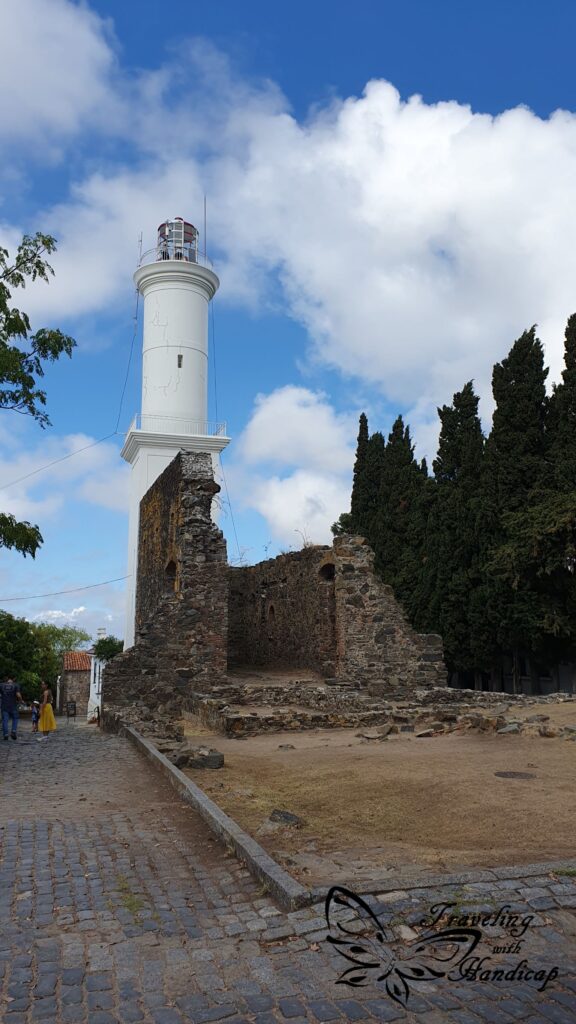
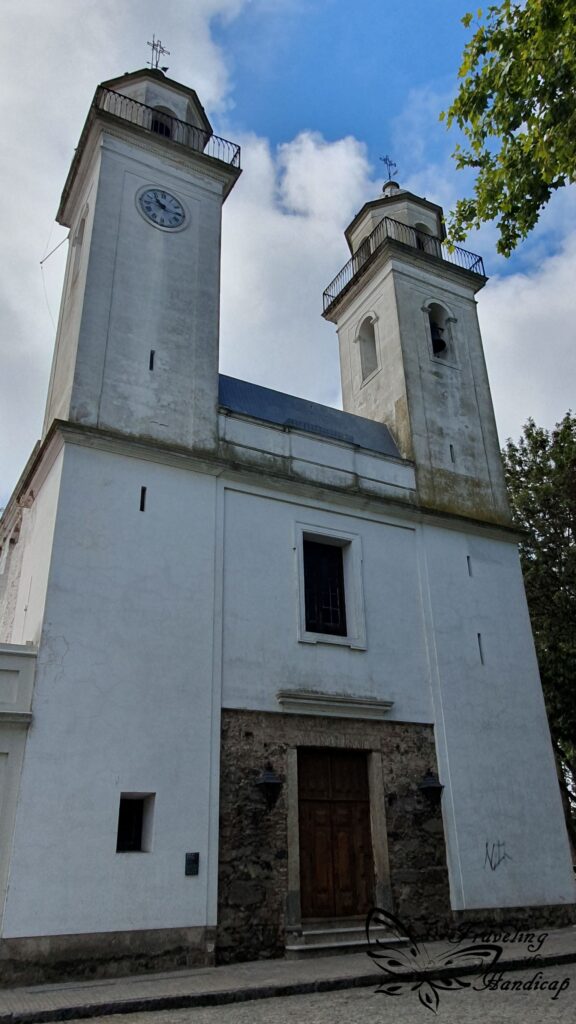


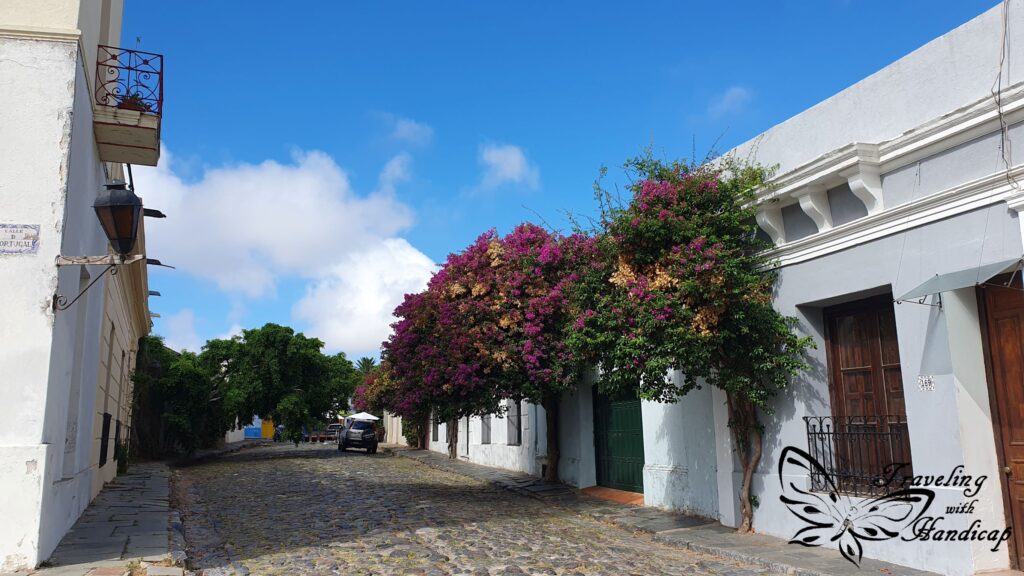
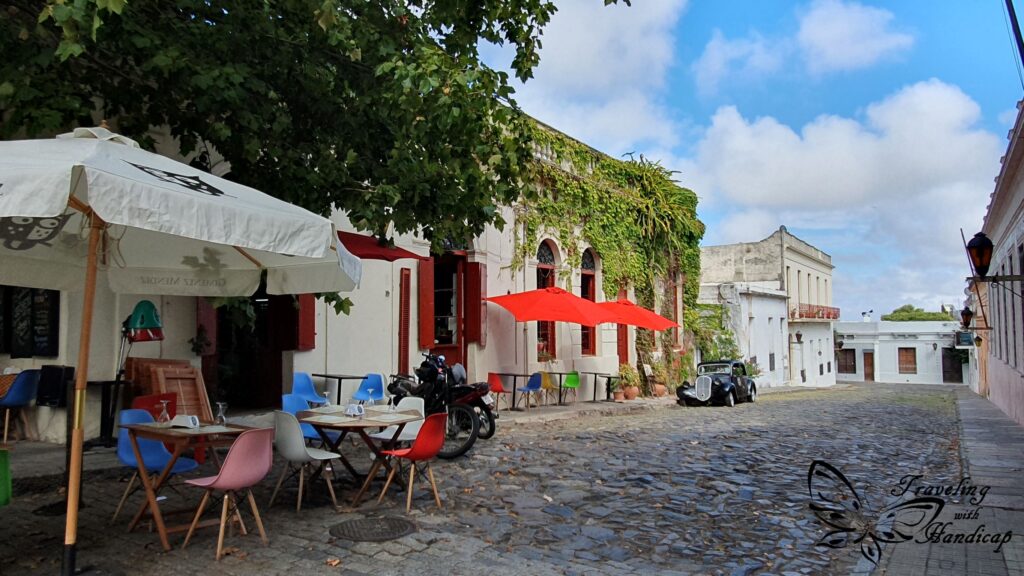

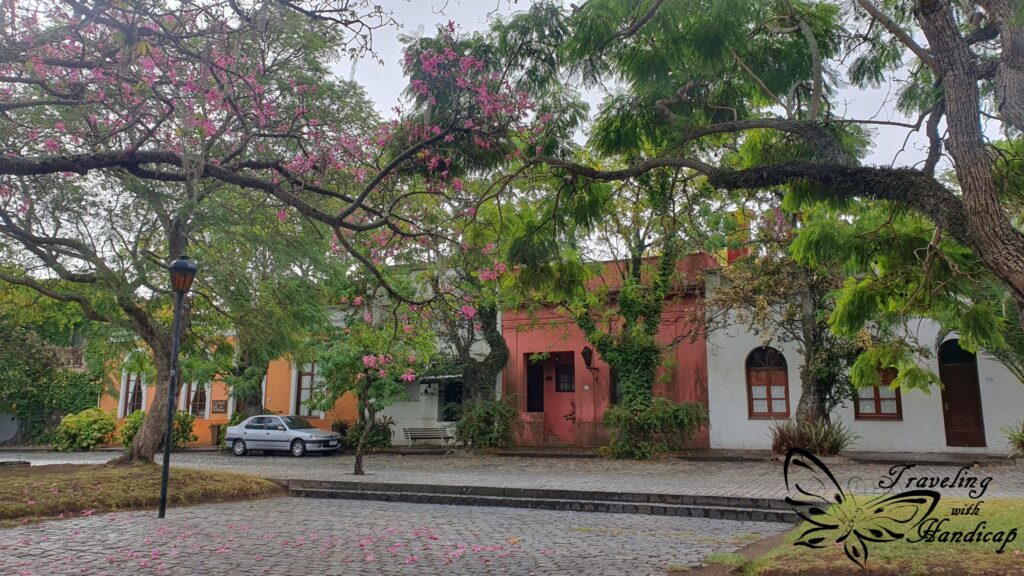

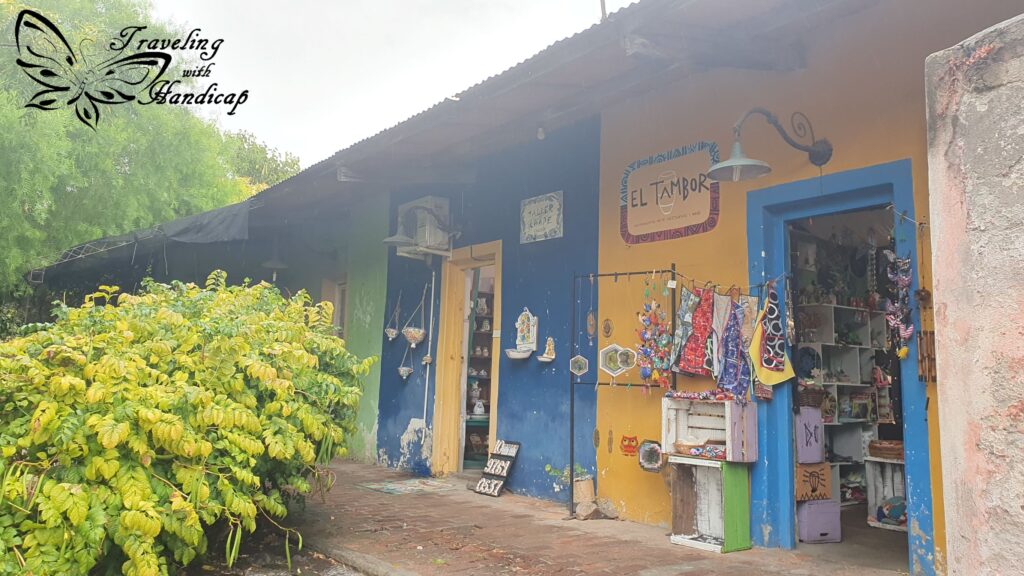

I went to the Santa Rita Bastion twice, once at sunset and once during the day, to drink some coffee with a view. The colors were stunning! Unfortunately, there were clouds at the horizon. Otherwise, I would have seen the skyline of Buenos Aires, at least its shades, at the horizon. Even with the clouds I could encounter some shadows, though, for photos I would have needed a super-zoom lens. It was a great atmosphere. Usually, I avoid sunsets outdoors since it might not be safe anymore. However, I wasn’t worried at all in Montevideo and as well it was completely fine in Colonia.
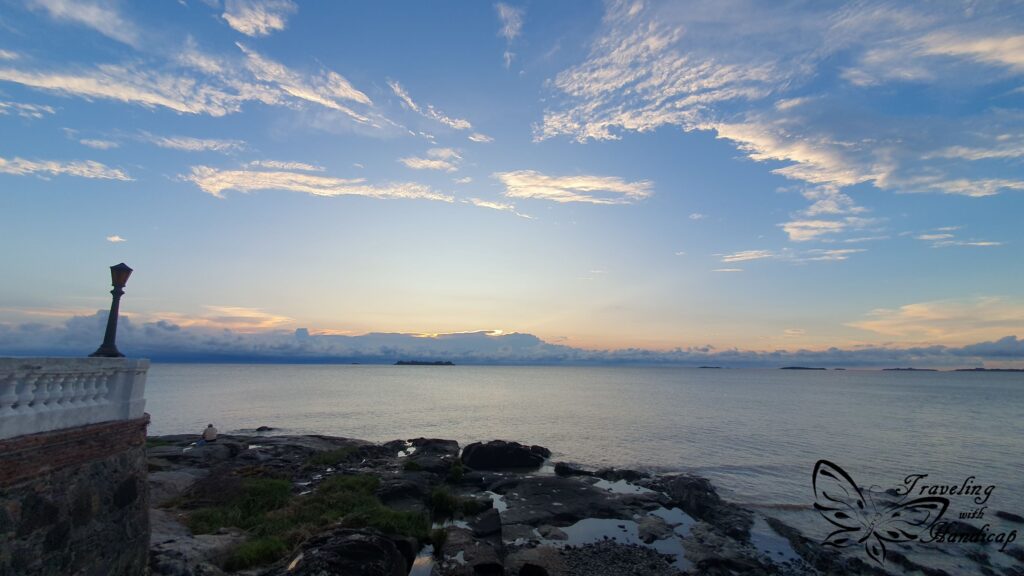

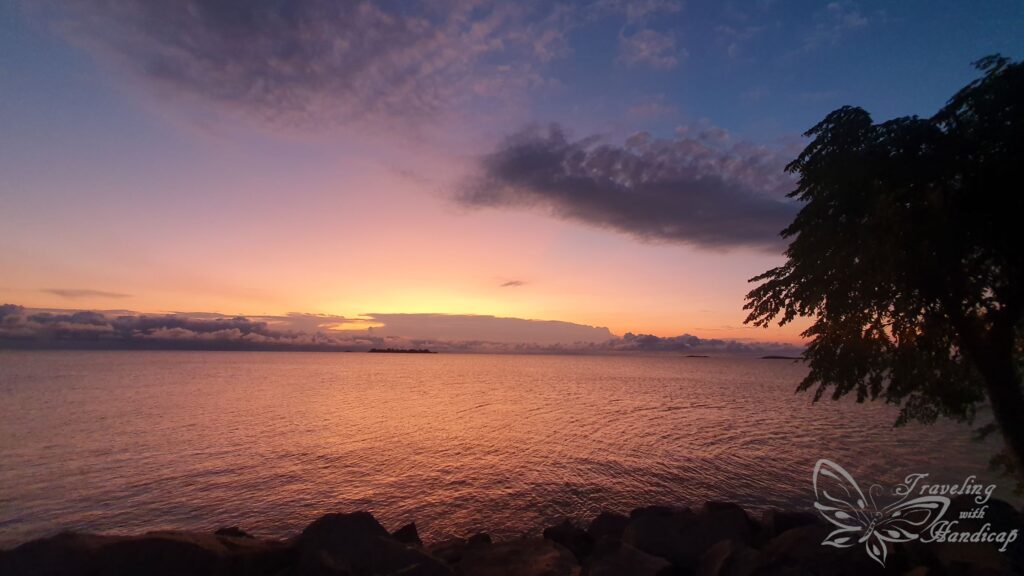
The ferry
As already mentioned in my article on Montevideo, the ferry is a convenient connection to Buenos Aires. Moreover, it’s even in walking distance to the ciudad vieja, so you don’t have to worry about taking additional buses. The bus terminal is, as a side-note, also directly next to the ferry terminal. Moreover, the ferry ride was very smooth, the water (Rio de la Plata) was very calm, a lot better than bump holed on the road.
How-to
- You have to book your tickets online, either through Colonia Express or Buquebus. The earlier you book, the cheaper fares you might catch (weekends are more expensive in general)
- Then you need to go to the respective check-in area in the terminal to get your ticket.
- With the ticket, you go to the emigration area
- As soon as you are emigrated from Uruguay, you wait in the lobby until boarding is announced.
- You board and pick your seat – just take care to either store your luggage in one of the luggage racks or the seat next to you (I hate luggage along the walkways hindering you to pass through).
- Catch a window-seat on the right side if you head to Buenos Aires because then you get a view of the city.
- When embarking, you have to queue for quite some time because everyone needs to get through immigration. In order to speed up your own immigration, always have passport and reference of your booked accommodation ready (that’s what they always ask for in Argentina).
- Be prepared for either queuing for a taxi or which bus to take (and be aware that some quarters should be avoided in the evening/ when it’s getting dark)
